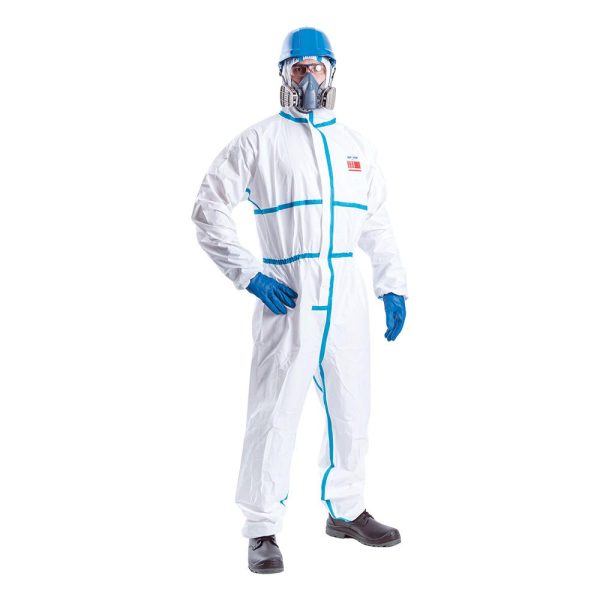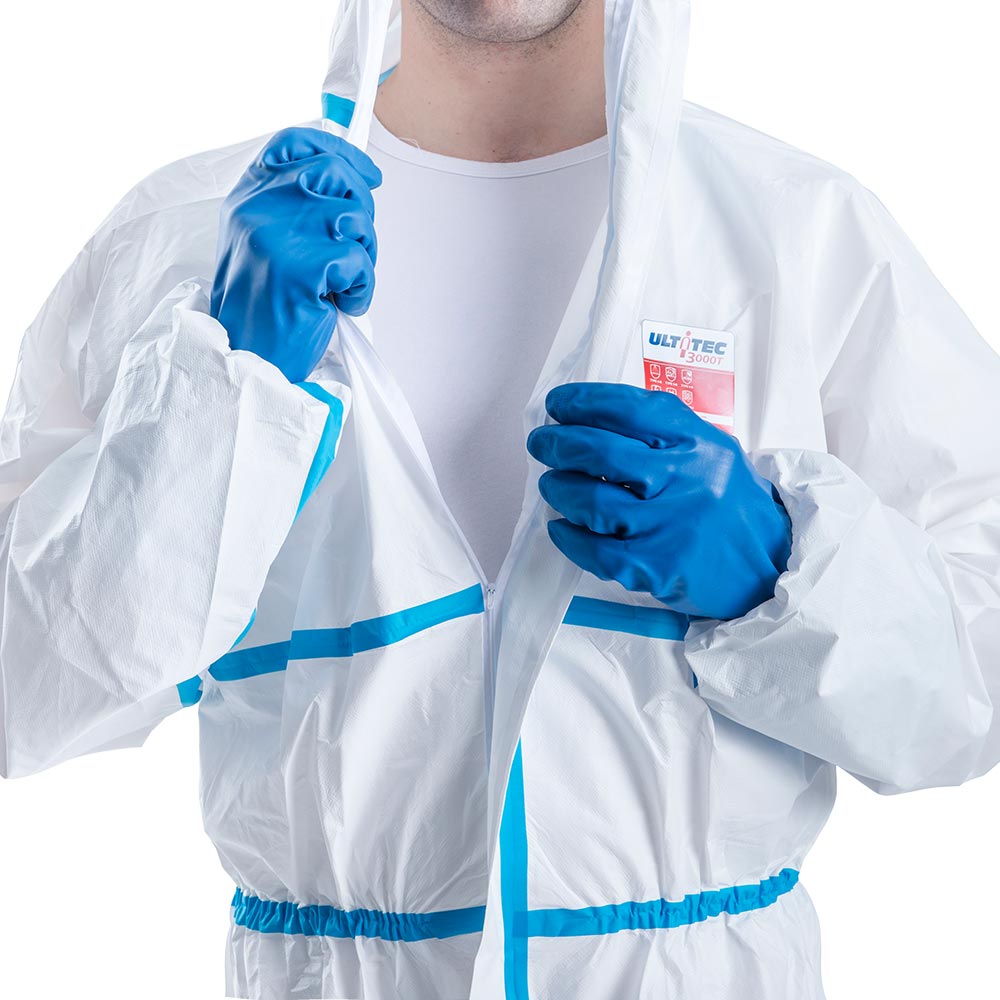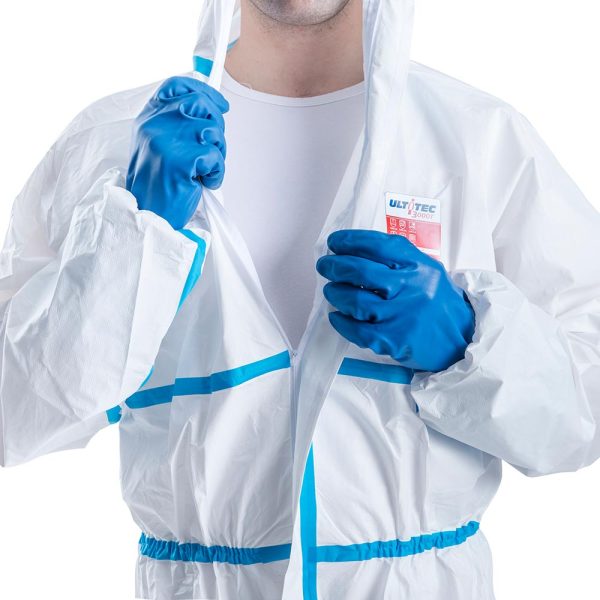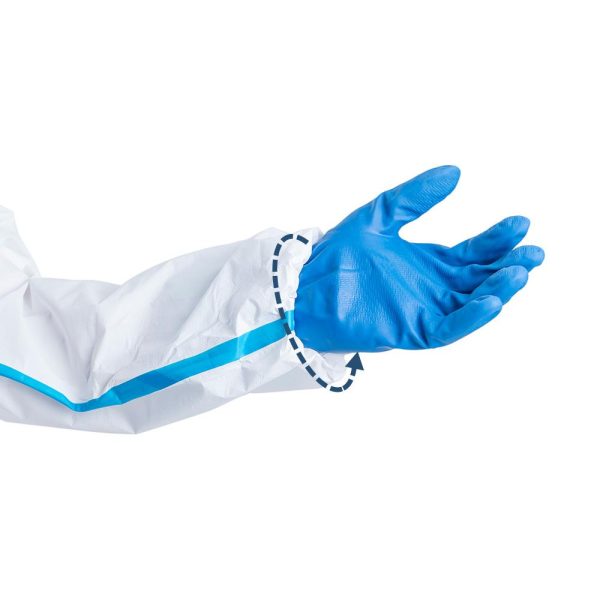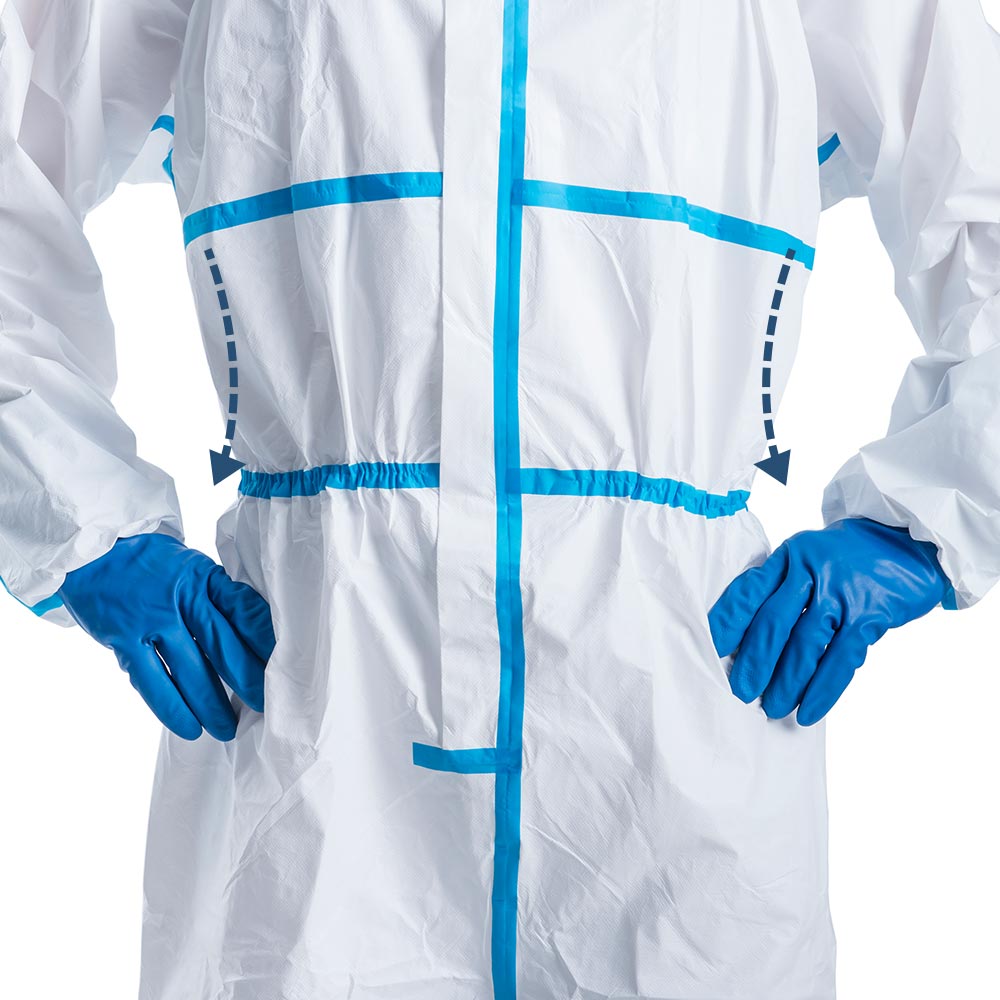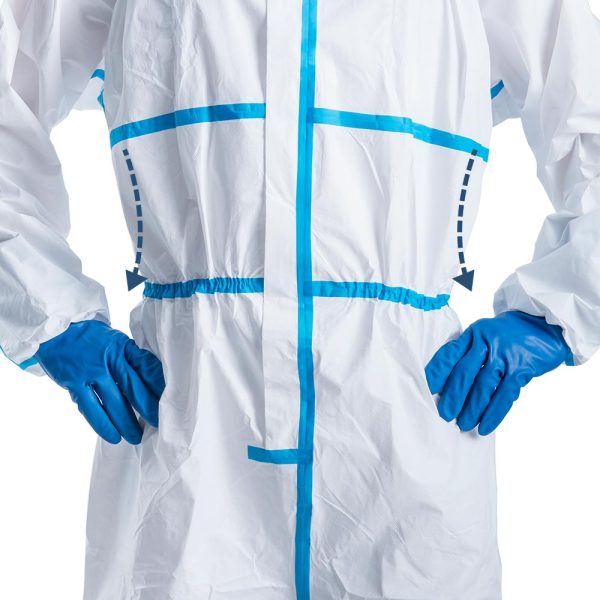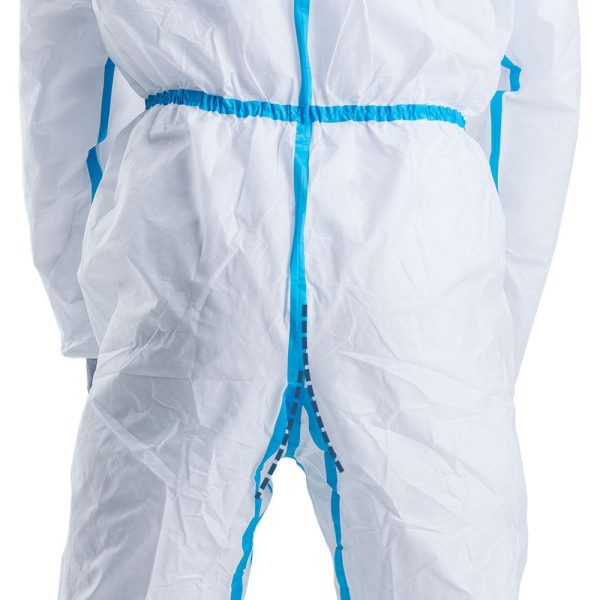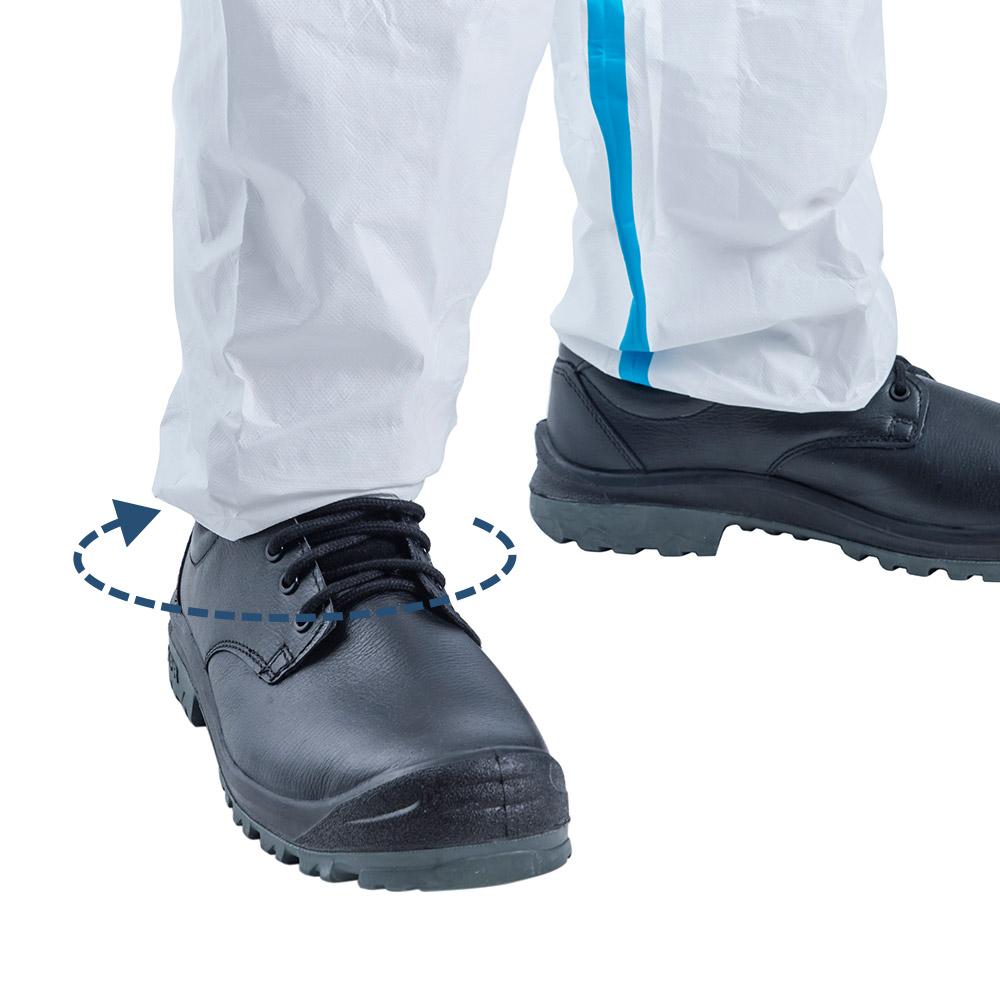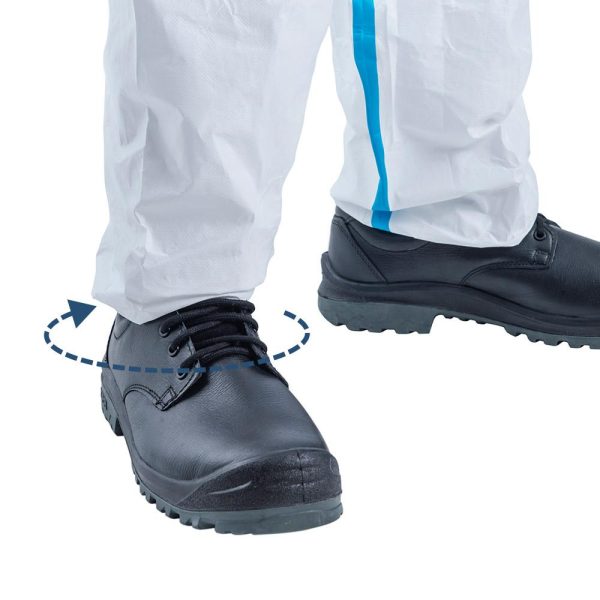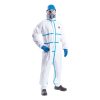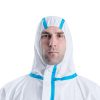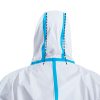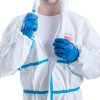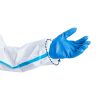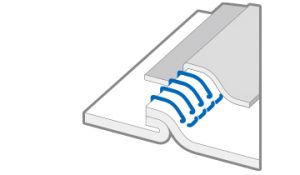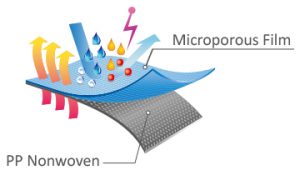Features
The premium microporous fabric offers an outstanding barrier against wide range of chemical liquids, blood, body-fluid and infective agents.
Fully meets EN 368, ASTM F1670 & EN 14126. The performance also exceeds both WHO protective clothing specification option 1 & 2 for Ebola infection control.
Protective suits against pesticides
Meets DIN 32781 requirement on both protection and comfort in agriculture application.
Breathable & comfortable
Fabric allows water-vapour transmission, which offers breathability to keep the wearer comfortable.
Low linting
Reduces the risk of fiber contamination to the work environment.
Sealed seam
All seam are covered by liquid-proof tape to make sure no seepage.
The WHO recommended specification for coveralls against filovirus disease issued in Oct, 2014 stated that healthcare workers should choose appropriate protective apparel, which meets the following two requirements:
option 1, tested for resistance to blood and body fluid penetration: meets or exceeds ISO 16603 class 3 exposure pressure
option 2, tested for resistance to blood-borne pathogen penetration; meets or exceeds ISO 16604 class 2 exposure pressure.
![]()
![]()
![]()
![]()
![]()
![]()
![]()
- TYPE 4 EN 14605 Spray Tight Suits- Suits which can protect against saturation of liquid chemical, where volume of the liquid builds up on the suit forming pools, resulting in rivulets.
- TYPE 5 EN ISO 13982-1 Dry Particle Suits-Suits for protection against hazardous dusts and any dry particles.
- TYPE 6 EN 13034 reduced spray -suits which offer limited protection against a light spray of liquid chemicals.
- EN 1149-5 Electrostatic dissipative protective clothing with a surface resistance of maximum 2.5×10 exp 9 ohm.
- EN 1073-2 Protective clothing against particulate radioactive contamination.
- EN 14126 Protective clothing can resist against biological hazards and infective agents.
- DIN 32781 Protective suits against pesticides.


